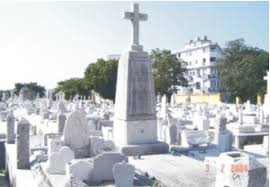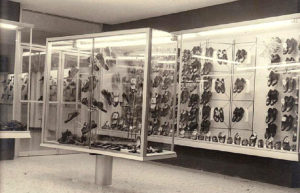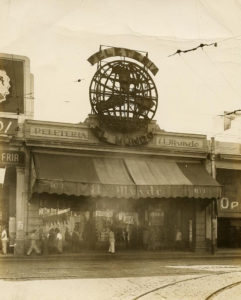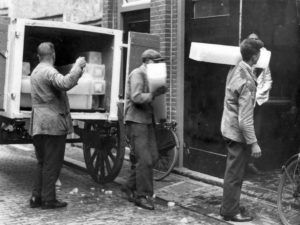In Cuba before 1959 there were many characters who disappeared to change the Cuban panorama until today. Among these are some of interest to many Cubans who found it useful or who managed to bring some usefulness to their contemporaries.
Let’s make a short summary of these characters and the same trades of which they took part:
Sighs and Tears.
Because two or three of these characters were always waiting at the door of every graveyard to be respected. As soon as a procession entered, the group of mourners would be steered safely, and among them he would discover at a glance who could decide for others. Then, after conveying his condolences, I asked him respectfully and, in a whisper, asked him if there were any who would dismiss the duel. If I had it, nothing happened; Our character apologized to the mourner for having disturbed his attention at times like these and returned to the door to discuss the next burial. If they told him no, that the family had found no one to entrust to him the task of dismissing the deceased at the foot of his grave, he discreetly offered his services. A speech for a small price in which the virtues of the dead were praised or made. It was enough for the speaker to make up his words, which were always the same from one burial to another. In them, invariably, the dead was a father and a loving husband, an exemplary citizen, a close friend and his family, a family that was desolated by the loss, plunged in despair and weeping …
True, they were words that, with the necessary changes, were repeated almost by heart. But what gestures that of that exporter of office! What an emphasis yours! What a painful face to balance on the edge of the open grave with the hat placed at the level of the chest! Words paid and not felt that moved, however, to the chick of the dove. If in the last Cuba a denim suit was calibrated by the number of wrinkles that it was able to withstand, the quality of these speakers of both the word was measured by the tears and sighs that they took off.
El Peletero.
Other occupations did not disappear, but varied in their intrinsic essence. There is that of the furrier, which is as we have always called on the Island to which he sells us a pair of shoes. In one of the furties of the now, the products are shown in a rare display. Only one piece of each pair can be seen, and can be tested. If by chance they placed the two shoes on the display, they will be fastened to each other by a clasp or security clip that will make them sound at the door like devils if someone tries to take them without paying them. This means that even if the two shoes of the pair are shown the customer will never be able to prove them as God commands. If at all, if he succeeds, he will fit one first and then the other.
That was not always the case. Buying a pair of shoes was a ritual that step by step was fulfilled to the end. The client chose the model of his preference in the glass, showed it to the furrier and waited, seated, his request after confessing the number he wore. When the furrier appeared again he came not only with the requested model and number, but with four or five more pairs of shoes. And, with a shoehorn and in front of a mirror that allowed to appreciate the product, it was necessary to prove them all to the client, leaving of last one that this one was interested to acquire.
What motivated so much request? Quite simply, a problem of pesos and cents translated into a commission that in favor of the employee ran a scale ranging from three to one percent or fraction. The first model that the skinner tried, even if they had not asked for it, was the one that had gone out of fashion and threatened to sleep the eternal sleep in the warehouse of the establishment or be carried, for possible liquidation, to a lesser furs. The others were shoes that were on the rise, but for one reason or another they had no outlet and were expected to happen to them as well as to the one that had already gone out of style. The older the model the furrier, with his capacity for persuasion and persuasion, was able to sell, the higher the commission he charged and at the end of the month rounded his entrances, while the shoe displayed in the window barely left Dividends.
Another characters that disappeared after 1959 was the Ice Maker or Nevero, this was a character that for five cents brought us, wrapped in a sheet of newspaper, a piece of ice that lasted until almost the next day if he got into the fridge or Kept well wrapped in a jute sack. It was the refrigerator of the poor that magical pebble that, among other things, allowed the blessing of cold water. Also disappeared that person who at five in the morning left us at the door or in the window of the portal a liter of milk that, although the need for more was great, no one stole. And the dying farewell also disappeared; Not the one whom the family designates for such a task, but the one who made it of office.
Memorias de Cuba: Oficios y Personajes.
En Cuba antes de 1959 existieron muchos personajes que desaparecieron al cambiar el panorama cubano hasta los días de hoy. Entre estos hay algunos que son de interés para muchos cubanos que lo encontraron útiles o que lograban llevar alguna utilidad a sus contemporáneos.
Hagamos un resumen corta de estos personajes y los mismos oficios de los que ellos tomaban parte:
Suspiros y Lagrimas.
Porque a la puerta de cada cementerio que se respetara aguardaban siempre dos o tres de esos personajes. En cuanto entraba un cortejo alguno se dirigía con paso seguro al grupo de los dolientes y, ya entre ellos, descubría a golpe de ojo al que podía decidir por los demás. Entonces, luego de trasmitirle su pésame, le pedía muy respetuosamente un aparte y casi en un susurro le preguntaba si tenía quién despidiese el duelo. Si ya lo tenía, no pasaba nada; nuestro personaje pedía perdón al doliente por haber molestado su atención en momentos como esos y volvía a la puerta para discutir el próximo entierro. Si le decían que no, que la familia no había encontrado a nadie a quien confiarle la tarea de despedir al difunto al pie de su sepultura, ofrecía discretamente sus servicios. Un discursito por un precio módico en el que se enaltecían o se fabricaban las virtudes del muerto. Bastaban al orador unos pocos datos para conformar sus palabras que, de un entierro a otro, eran siempre las mismas que daban la vuelta. En ellas, invariablemente, el muerto era padre y esposo amantísimo, ciudadano ejemplar, amigo a carta cabal y la suya, una familia que quedaba desolada por la pérdida, sumida en la desesperación y el llanto…
Cierto que eran palabras que, con los cambios imprescindibles, se repetían casi de memoria. ¡Pero qué gestos el de aquel despedidor de oficio! ¡Qué énfasis el suyo! ¡Qué cara de dolor al hacer equilibrio al borde de la tumba abierta con el sombrero colocado a la altura del pecho! Palabras pagadas y no sentidas que conmovían, sin embargo, al pinto de la paloma. Si en la Cuba pasada un traje de dril l00 se calibraba por el número de arrugas que fuese capaz de soportar, la calidad de estos oradores de a tanto la palabra se medía por las lágrimas y suspiros que arrancaban.
El Peletero.
Otras ocupaciones no desaparecieron, pero variaron en su esencia intrínseca. Ahí está la del peletero, que es como siempre hemos llamado en la Isla al que nos vende un par de zapatos. En una de las peleterías de las de ahora, los productos se muestran en una rara exhibición. Solo se puede ver, y es posible probarse, una pieza de cada par. Si por casualidad colocaron los dos zapatos en el exhibidor, estarán sujetos uno al otro por un broche o presilla de seguridad que los hará sonar en la puerta como endemoniados si es que alguien intenta llevárselos sin haberlos pagado. Esto quiere decir que aunque se muestren los dos zapatos del par el cliente nunca podrá probárselos como Dios manda. Si acaso, si es que lo logra, se calzará uno primero y luego el otro.
Eso no fue siempre así. Comprarse un par de zapatos era todo un ritual que paso a paso se cumplía hasta el fin. El cliente escogía en la vidriera el modelo de su preferencia, se lo mostraba al peletero y esperaba, sentado, su pedido luego de confesar el número que calzaba. Cuando el peletero aparecía otra vez venía no solo con el modelo y el número solicitados, sino con cuatro o cinco pares de zapatos más. Y, con un calzador y delante de un espejo que permitía apreciar el producto, procedía a probárselos todos al cliente, dejando de último el que este se interesaba por adquirir.
Qué motivaba tanta solicitud? Sencillamente, un problema de pesos y centavos traducidos en una comisión que a favor del empleado recorría una escala que iba del tres al uno por ciento o fracción. El primer modelo que el peletero probaba, aunque no lo hubieran pedido, era aquel que había pasado de moda y amenazaba con dormir el sueño eterno en el almacén del establecimiento o ser llevado, para su posible liquidación, a una peletería de menor rango. Los otros eran zapatos que estaban en onda, pero por una razón u otra no tenían salida y se preveía que sucediera con ellos lo mismo que con el que ya había pasado de moda. Mientras más viejo fuera el modelo que el peletero, con su capacidad de convencimiento y persuasión, fuera capaz de vender, mayor era la comisión que cobraba y que al fin de mes redondeaba sus entradas, en tanto que el zapato exhibido en la vidriera apenas dejaba dividendos.
Otros personajes que desaparecieron después de 1959 era el Hielero o Nevero, este era un personaje que por cinco centavos nos traía, envuelto en una hoja de periódico, un trozo de hielo que duraba casi hasta el día siguiente si se metía en la neverita o se mantenía bien envuelto en un saco de yute. Era el refrigerador de los pobres esa piedrecilla mágica que, entre otras cosas, permitía la bendición del agua fría. También desapareció aquel personaje que a las cinco de la mañana nos dejaba ante la puerta o en la ventana del portal un litro de leche que, aunque la necesidad de los más era mucha, nadie se robaba. Y desapareció asimismo el despedidor de duelos; no aquel a quien la familia designa para tal menester, sino el que lo hacía de oficio.
Agencies/CiroBianchi/Internet Photos/ Arnoldo Varona/ TheCubanHistory.com
THE CUBAN HISTORY, HOLLYWOOD.



 > CUBAN MEMORIES: Trades and Characters. + MEMORIAS CUBANAS: Oficios y Personajes.
> CUBAN MEMORIES: Trades and Characters. + MEMORIAS CUBANAS: Oficios y Personajes.







